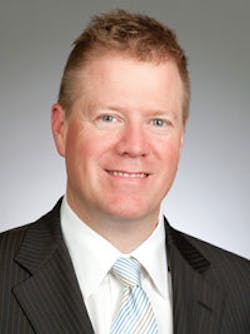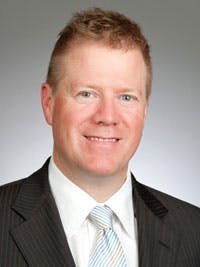Europe may be setting for next shale revolution
Don Stowers,Editor, Oil & Gas Financial Journal
Europe, which has long been reliant on outside sources for its natural gas and oil supplies, may be on the brink of developing its own supplies. But it won't happen overnight, and it may not happen at all. There are lots of "ifs," "ands," and "buts."
Let's start with the prospects. Except for Russia, Europe isn't favored with bountiful conventional oil and gas reserves. However, the continent has considerable unconventional petroleum locked away in shale and other subsurface formations.
The National Petroleum Council, which advises the US Department of Energy, estimates that Europe has about 550 trillion cubic feet of shale gas, 430 tcf of tight gas, and 275 tcf of coalbed methane (CBM) deposits. If developed, these deposits could make Europe virtually self sufficient in energy — at least with regard to natural gas.
To give you an idea of the size of European unconventional resources, IHS CERA's Jonathan Parry says they are roughly "on a par with North America." IHS CERA has identified 34 potential shale plays in Europe and 19 potential CBM plays to date. Of those 34 shale plays, five comprise 55% of the total potential, said Parry, who spoke at a Houston luncheon on Sept. 15. Those are southern Sweden's Cambrian, northern Poland's Cambrian, northern and eastern Poland's Ordovician-Silurian, Germany's Posidonia, and Austria's Mikulov plays.
Countries with potential commercial shale plays include the United Kingdom, the Netherlands, France, Sweden, Denmark, Germany, Poland, Czechoslovakia, Austria, Hungary, and Turkey.
Countries with potential commercial CBM plays include the United Kingdom, the Netherlands, Germany, and France.
IHS CERA has been conducting a comprehensive study of European unconventional gas potential that it expects to finish by the end of this year. Parry said that data from North American unconventional resource plays, such as depth, pay thickness, maturity of the field, gas content, and brittleness, will be used to extrapolate potential resources and development costs of European plays.
Of all the nations in Europe, Poland may have the greatest potential for development of its shale resources. The country's economics minister, Waldemar Pawlak, says he plans to offer an estimate of the approximate size of Poland's shale gas reserves within the next 12 months. However, he believes it will be "seven to 10 years" before the gas is commercialized.
Poland has issued close to 60 exploration concessions to foreign and domestic companies, including US oil majors ExxonMobil, Chevron, and ConocoPhillips, to explore for gas in the country's Silurian and Ordovician shales, which run from the onshore Baltic Basin in northern Poland to the Podlasie and Lublin basins in southeastern Poland.
UK-based Lane Energy, which has a joint venture agreement with Houston-based ConocoPhillips, has drilled two vertical exploration wells in Poland this year, the first such wells in the country's shale prospects. BNK Petroleum and Poland's state-run gas company, PGNiG, separately planned to spud exploration wells at different sites in northern Poland in the fourth quarter of this year.
Not every oil and gas company shares the optimism about development of unconventional energy resources in Europe. Speaking at the World Energy Congress in Montreal on Sept. 13, Shell CEO Peter Voser had a favorable view of natural gas and oil shale plays in North America and South Africa. However, he was less optimistic about the development of European shale assets.
While acknowledging that the "shale revolution" has the potential to change the energy landscape, Voser said that the public and energy experts haven't fully grasped the extent of coming production from unconventional resource plays.
Speaking to reporters after his speech, Voser noted that his company is developing shale gas plays in South Africa, which he says is acceptable to the government and the public there. In contrast, he said he believes that Europeans would not agree to the type of land use common in North America and South Africa because of the population density and cultural differences.
IHS CERA's Jonathan Parry concurs that there are "special issues" in Europe that unconventional resource developers in other parts of the world don't have to worry about.
A major obstacle in developing shale gas in Europe is that about 12 or more wells would need to be drilled in each of the five potential large plays to assess commercial viability, but E&P companies have little incentive to do that because of European regulations. Even after incurring the expense of drilling these exploratory wells, the companies would not be guaranteed access to the reserves, so there is little reason to drill more than just a few wells, he said.
Another issue in Europe is water management. Shale projects require large quantities of water to fracture shale formations. In Europe, water would have to be trucked to drilling sites and the used water would have to be trucked back for treatment. This adds tremendously to the cost of drilling.
A number of European energy companies are partnering with US companies in American shale plays, including France's Total in the Barnett Shale with Chesapeake Energy and Norway's Statoil with Chesapeake in the Marcellus Shale. One of the goals is to acquire expertise from experienced North American operators such as Chesapeake, including their specialized knowledge of shale, tight gas, and CBM formations, as well hydraulic fracturing techniques.
For its part, Total has been acquiring assets in the south of France and in other as yet undisclosed European countries, apparently in preparation for developing shale gas reserves in those locations.
Also in France, Paris-based Toreador Resources Corp. and Hess signed an agreement in May in which Hess becomes a co-holder of Toreador's awarded and pending exploration permits in the Paris Basin, which are estimated at about 1.3 million gross acres. The partnership combines Toreador's position in the Paris Basin shale oil resource with Hess's position as a leading shale oil producer in the United States (the Bakken shale oil play), as well as utilizing Hess's considerable financial strength.
Under terms of the agreement, Hess is investing about $120 million in a two-phase work program. Phase 1 will consist of an evaluation of the acreage and drilling six wells. Depending on the results of Phase 1, Phase 2 is expected to consist of appraisal and development activities. Following Phase 2, provided that contractual obligations have been met, Hess will hold a 50% share of Toreador's working interest in the covered permits.
In an interview with OGFJ recently, Toreador CEO Craig McKenzie said the Paris Basin is "almost entirely oil." He noted similarities to that of the Bakken shale formation in the US. "The source rock composition, the depth, the temperature, and to some degree the pressures, are similar to the Bakken shale. As such we are hopeful we will have a similar production response."
In addition, McKenzie said the Paris Basin has been producing conventional oil for over 50 years and that "there is a refinery literally right in the middle of the basin with 70,000 barrels a day of excess capacity." He said the basin is in a rich agricultural area and that Hess and Toreador will be drilling 6,000 feet below the fresh water aquifer, so he doesn't anticipate problems with chemical contamination. When discussing the use of fracture stimulations, he said, "The volume of chemicals is very, very low."
McKenzie also believes the economics for oil produced in the Paris Basin are better than any US oil play. The royalty is set by the French government and is less than typically seen in the US, he added.
"This is the right time to prove the concept, and hopefully develop, the Paris Basin shale oil," concluded McKenzie. "We have the technology and experience. Although recovering gas from shale is more prevalent than oil, gas prices are suppressed and oil prices are not."
The Paris Basin aside, most of the shale formations in Europe are gas plays. Low prices won't necessarily discourage shale gas development because European countries are accustomed to paying prices dictated by suppliers, particularly Russia, and they also buy a considerable volume of gas on the LNG market. Some market analysts see a gas shortage by 2013 or 2014, so developing its own shale gas resources would help Europe cope with the anticipated shortfall.
Francisco de la Flor Garcia of Spain's Enagas noted recently that shale gas is not only competitive with conventional gas supplies, but in the US it is the lowest-cost gas. With this in mind, some E&P companies intend to forge ahead with their plans to develop unconventional gas in Europe despite cultural obstacles and other considerations that aren't a factor in North America and elsewhere.
More Oil & Gas Financial Journal Current Issue Articles
More Oil & Gas Financial Journal Archives Issue Articles
View Oil and Gas Articles on PennEnergy.com

